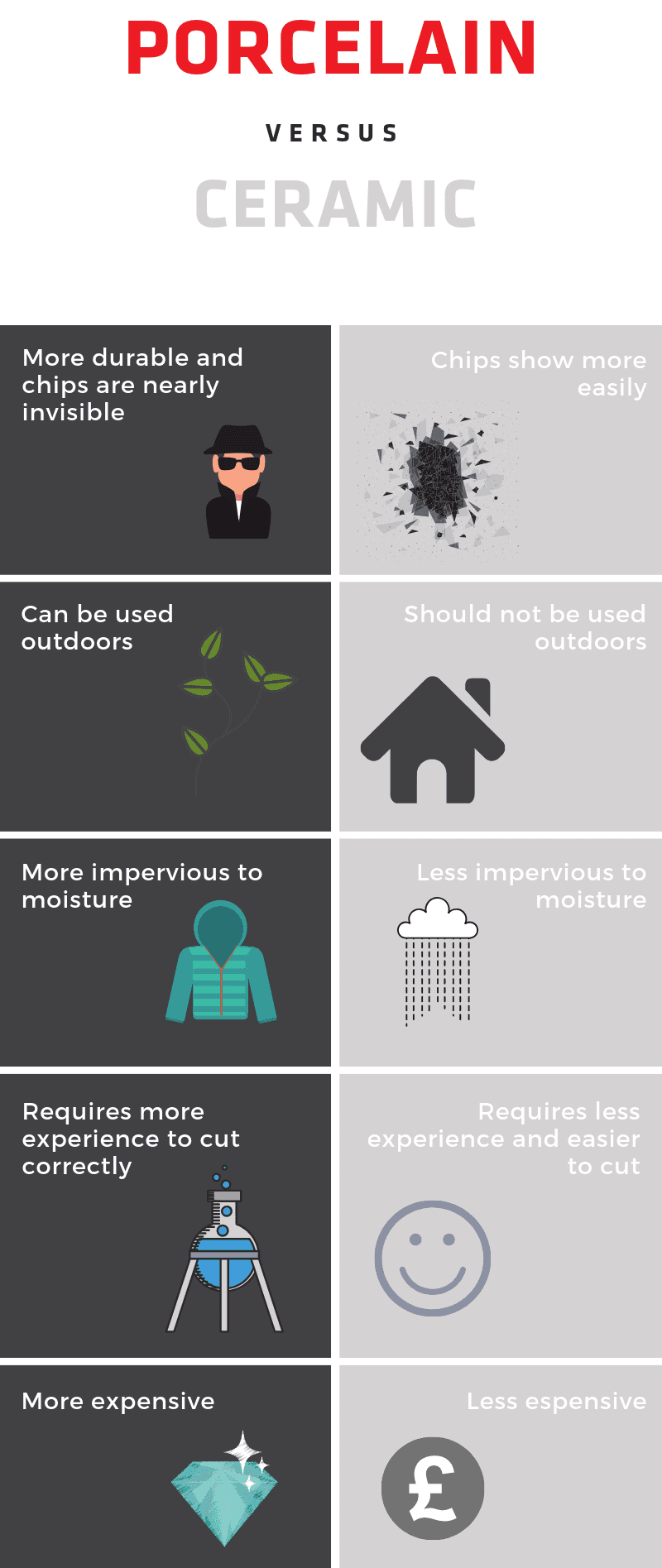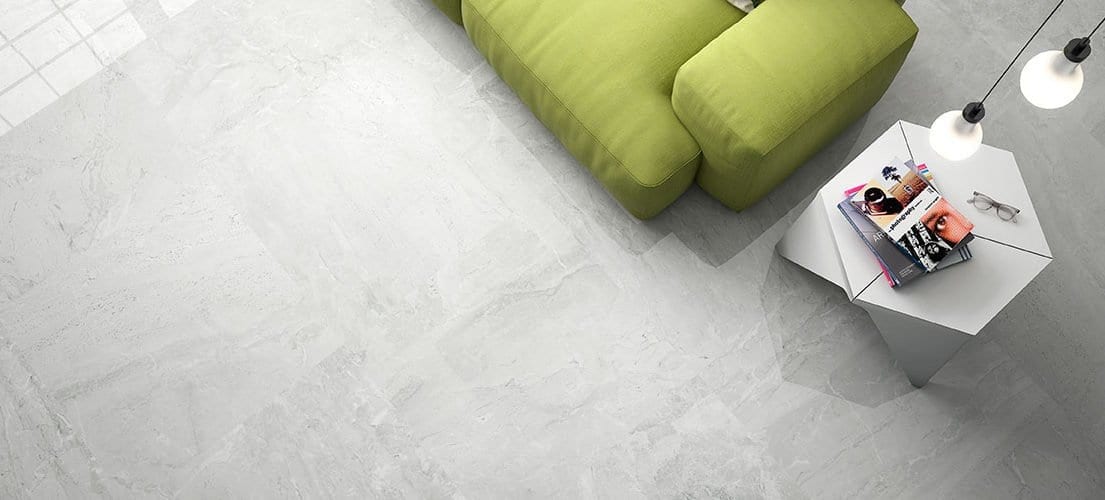The terms porcelain and ceramic are often used interchangeably as if they were the same thing, but are they? What should you choose for your space?
Moisture resistance
The main difference between the two is that porcelain tiles are more impervious to moisture, so are less likely to get damaged and crack from water infiltration.
Durability
Porcelain tiles are also slightly more durable because they are denser than ceramic tiles.
While both porcelain and ceramic are fired at high temperatures, porcelain is fired at even higher temperatures and for a longer time than ceramic.
Interestingly, if you chip the ceramic tile, you will find a different colour underneath the top glaze. Chip the porcelain, however and the colour keeps on going, all the way through. As a result; the chip is nearly invisible.
Ease of use
Tile density has its benefits, but there are also drawbacks. Ceramic tiles are a far easier material for DIYers to cut manually, by wet tile saw, or with a snap tile cutter.
Porcelain tile is more brittle and may require the experienced hand of an experienced tile-setter to cut properly and avoid cracking your expensive tiles.
Cost
Ceramic tiles will nearly always be cheaper than porcelain tiles. Porcelain is more expensive to manufacture than ceramic, resulting in higher retail prices.
How can you tell the difference?
According to the industry group that decides whether a tile is porcelain or ceramic, everything boils down to whether the tile can meet a set of highly controlled water absorption criteria. If you’re unsure, speak to a member of the Bristol Tile team.


